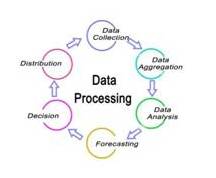By Gui Orliac
Let me state the obvious: we have, both professionally and individually, access to an enormous amount of data. We are also generating vast amounts of data, from what we search on Google, purchase on Amazon, and like on Facebook, data is generated and captured. And yet with all this data, is our experience improved? Is data used effectively on both the consumer and professional sides?

Having access to so much data makes it a challenge to appreciate which data to use and when. As individuals we have coping mechanisms, filtering or ignoring data and or information. I had a discussion with a friend of mine asking him if he received my email, and he said he did not know, as he does not check personal emails anymore since there is too much junk. As indicated above 67% of emails are spam. In organizations, we have to use data but the exponential amount of data that one has to look at and the actions that have to be taken as a result of the insights provided by the data makes it very hard to leverage the data. In many cases, data will just be ignored as organizations are not organized to take advantage of existing data. With increasing amounts of data available the problem will be amplified.
In her book “Data Driven” one of Karen Levy’s arguments is that organizations are using data-generating technology as surveillance tools of the employees. Her argument is that companies are inserting data-capturing technologies such as cameras, tracking devices etc… to surveil their employees rather than relying on their professionalism. At the same time these organizations by adding data-capturing technologies are generating even more data that they cannot leverage. They only review the data when there is a problem leading to a sentiment of surveillance. Some organizations try to outsource the management of these new data points in order to generate insights with mixed results.
We have a lot of data, we generate a lot of data and in many cases, we don’t use it very well and the trend of data generation is only increasing. We can give up or take a step back and change our relationship with data. My statistics professor at the University of Massachusetts told us (a number of years ago) that data is valuable but understanding the data is more important.
Working in risk and risk management my experience is that data can be used well or not depending on how we relate to it. I spend a lot of time in my work looking at how our data can help us better understand risk. Many people I interact with want more data and I am always wondering why when the data already available is not leveraged. In many cases adding more data will just increase the confusion. Circling back to Karen Levy’s points about data surveillance, her book is about the transportation/trucking industry, she mentioned that drivers are under a constant data microscope. Most companies that have cameras cannot review the footage and/or hire outside companies to do this. This creates a huge burden on these companies and it is mostly unclear if they are achieving better loss control and risk management results. The new burden created appears to only be increasing.
While it is crucial to use data to manage risk in every industry and particularly in the industry I work in, transportation, it is even more important today to use data well so that it has a lasting effect on organizations. We need to design systems and processes that are focused on generating successes day in and day out rather than using poorly designed ones that have limited effectiveness turning beneficiaries against them. As data professionals, we need to make the use of data a positive experience for all involved. We need to move from surveillance to what we could call data-enhanced professionalism.
In my current organization we always have had a healthy relationship with data, we believe that it should be used to enhance a human action and/or decision. Combining data with professionals who focus on extracting the relevant data points and using them to improve outcomes is the focus of our work. Importantly we look at doing this at scale. This is the approach that we have taken with John Farquhar, owner of Summit Risk Solutions, a provider of risk management solutions to the transportation industry. Using FAIR Score™, a proprietary scoring, he can rapidly generate insights on a transportation company, before he has had any contact with the company. With the insight generated from this data, he can start understanding their Risk Profile and work on Loss Control and Risk Management as needed.

To be effective in leveraging data we need to use tools and solutions that are both providing insights in a simple way and that allow an organization to take action. To do better risk management we need to use data that allows us to continue improving our understanding of risk, that allows us to take action, and that the data is meaningful for all the people involved in the ecosystem. Conversely, using all the data points generated and trying to act on all as discussed may not be possible and may make us focus on the tree, missing the forest. In my organization, we believe that if a driver, a manager, a company owner, an insurance agent, an underwriter, or a re-insurer can be aligned on the data they have, everybody becomes part of the solution. Then effective and long-lasting positive solutions can be developed and implemented, moving from a surveillance construct to a participatory one.
